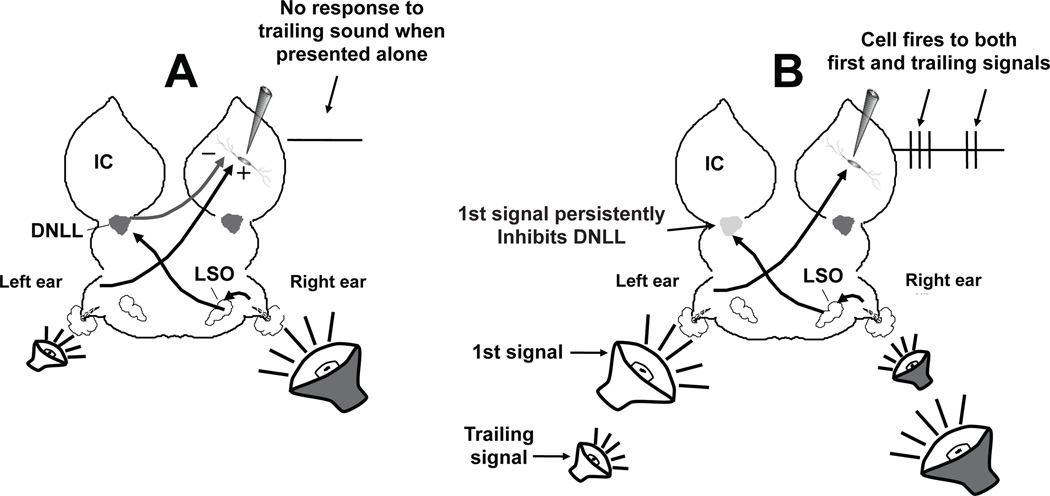Fig. 6.
Schematic illustration of why responses to trailing sounds are changed by reception of an initial sound in IC cells in which the EI property is created de novo by an excitatory projection from a lower monaural nucleus and an inhibitory projection from the contralateral DNLL. A: The cell fails to fire to a binaural signal in the ipsilateral sound field because the intensity at the inhibitory (left) ear is greater than the sound intensity at the excitatory (right) ear. The response failure at the IC is due to the strong inhibition from the contralateral DNLL. B: The same binaural signal as in panel A is preceded by an initial signal in the contralateral (left) sound field. The initial signal not only drives the IC cell, but also generates a persistent inhibition in the DNLL (indicated by change in shading from dark grey in A to light grey in B). When the second, or trailing signal, is presented, the trailing signal now evokes discharges because the IC cell is deprived of its inhibitory innervation from the DNLL due to the persistent inhibition evoked by the first signal. Hence the IC cell now fires to both the first and trailing signals, although it would not fire to the trailing signal when that signal was presented alone (as in A).

